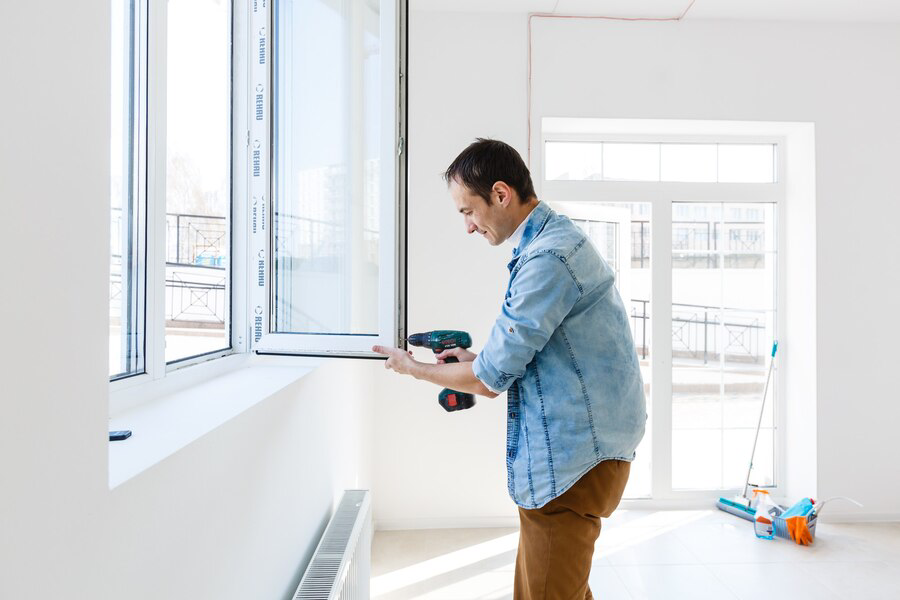
Replacement Window Styles and Designs
When it comes to upgrading your home’s windows, the variety of styles and designs available can be both exciting and overwhelming. Each replacement window style offers unique aesthetics and functionality, catering to different architectural preferences and practical needs. From classic double-hung windows that provide timeless charm and excellent ventilation to modern casement windows that offer a sleek, unobstructed view and superior energy efficiency, the choices are plentiful. Bay and bow windows can transform a room with their panoramic views and additional space, while sliding windows offer ease of operation and contemporary appeal. Specialty shapes like arched or geometric windows can add character to any home, serving as focal points or complementing existing architectural elements. Understanding the different window styles and designs allows homeowners to not only enhance their home’s curb appeal but also improve energy efficiency and overall comfort. Whether renovating a historic property or modernizing a new build, selecting the right replacement windows can significantly impact both aesthetics and functionality.
Energy-Efficient Replacement Window Styles
Choosing energy-efficient replacement windows can significantly enhance your home’s comfort, reduce energy bills, and contribute to environmental sustainability. In this guide, we’ll explore eight energy-efficient replacement window styles that can help you make an informed decision based on your needs and preferences.

Double-Hung Windows
Double-hung windows are a classic choice known for their versatility and energy efficiency. These windows feature two operable sashes that allow for better ventilation control and improved airflow management. When properly installed and sealed, double-hung windows can minimize drafts and heat loss, making them a practical option for energy-conscious homeowners.
Casement Windows
Casement windows are hinged at the side and open outward, creating a tight seal when closed. This design not only provides excellent ventilation but also enhances energy efficiency by reducing air leakage. Casement windows are ideal for areas where airflow and natural light are priorities, such as living rooms and kitchens.
Awning Windows
Awning windows hinge at the top and open outward from the bottom. They are designed to capture breezes and direct them into the home while preventing rain from entering. Awning windows seal tightly when closed, making them an energy-efficient choice that enhances insulation and minimizes heat transfer.
Fixed Windows
Fixed windows do not open and are designed primarily to provide natural light and views. While they are not operable, fixed windows can be highly energy-efficient because they are sealed shut permanently, eliminating any potential for air leakage. They are often used in conjunction with operable windows to maximize energy savings.
Picture Windows
Similar to fixed windows, picture windows are large, stationary windows that offer unobstructed views and ample natural light. Their energy efficiency lies in their ability to provide daylight without compromising the home’s insulation. Picture windows are a stylish choice for rooms where ventilation is not a priority.
Choosing the Right Replacement Window Design for Your Home
Replacing windows in your home is a significant investment that can enhance both its aesthetic appeal and functionality. Choosing the right replacement window design involves considering various factors such as architectural style, functionality, energy efficiency, and personal preferences. In this guide, we’ll explore eight popular replacement window designs to help you make an informed decision that complements your home’s unique characteristics.
Double-Hung Windows
Double-hung windows are one of the most common window designs, characterized by two vertically sliding sashes that allow for both top and bottom ventilation. They are versatile, easy to clean, and complement traditional and modern architectural styles alike. Double-hung windows are ideal for bedrooms, living rooms, and kitchens where ventilation control is essential.
Casement Windows
Casement windows are hinged at the side and open outward with a crank mechanism. They offer excellent ventilation and unobstructed views because the entire pane can swing open. Casement windows are suitable for contemporary and transitional homes and work well in areas where you want to maximize airflow, such as kitchens and bathrooms.
Sliding Windows
Sliding windows feature sashes that glide horizontally past each other. They are easy to operate and provide a contemporary look that suits modern homes and apartments. Sliding windows are ideal for areas with limited exterior space, such as patios or balconies, and are known for their ease of use and energy efficiency when properly sealed.
Awning Windows
Awning windows are hinged at the top and open outward from the bottom, forming an awning-like effect. They provide excellent ventilation and protection against rain, making them ideal for humid or rainy climates. Awning windows are often used in conjunction with other window styles to enhance airflow and natural light in kitchens, bathrooms, or basements.
Bay and Bow Windows
Bay and bow windows protrude outward from the exterior wall, creating additional interior space and panoramic views. Bay windows typically consist of three panels, while bow windows have a more curved appearance with multiple panels. These windows add architectural interest to a home and are commonly found in living rooms or dining areas.
Maintenance Tips for Various Replacement Window Styles
Proper maintenance is crucial for ensuring the longevity and efficiency of replacement windows. Different window styles require specific care to keep them looking great and functioning properly. Here are maintenance tips tailored to common replacement window styles to help you preserve their beauty and performance over time.
- Double-Hung Windows: Regularly clean tracks and lubricate moving parts to ensure smooth operation. Inspect weatherstripping and replace if worn to prevent drafts.
- Casement Windows: Clean hinges and lubricate annually to keep the mechanism operating smoothly. Check seals and caulking around the frame for leaks and reseal as needed.
- Sliding Windows: Clean tracks and remove debris to prevent sticking and ensure easy sliding. Inspect and replace worn-out rollers to maintain smooth operation.
- Awning Windows: Clean hinges and mechanisms regularly to prevent dirt buildup. Check seals and caulking to ensure a tight seal against moisture and drafts.
Conclusion
Choosing the right replacement window style for your home involves considering various factors such as aesthetics, functionality, and energy efficiency. Whether you opt for the classic elegance of double-hung windows, the modern appeal of casement windows, or the panoramic views provided by picture windows, EZ Window Solutions of Cleveland is here to guide you through the process. Our commitment to quality craftsmanship and customer satisfaction ensures that your new windows not only enhance the beauty of your home but also improve its overall energy efficiency.
If you’re ready to transform your home with new replacement windows, contact EZ Window Solutions of Cleveland today. Our experienced team in Cleveland, Ohio, is dedicated to providing personalized service and expert advice tailored to your specific needs. Give us a call at 440-773-4396 to schedule a consultation or visit our website to learn more about our wide selection of window styles and designs. Enhance your home’s comfort and curb appeal with EZ Window Solutions—the trusted choice for replacement windows in Cleveland.


Write a Comment